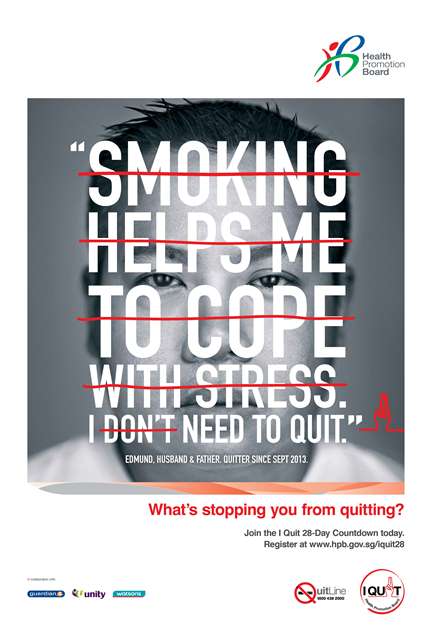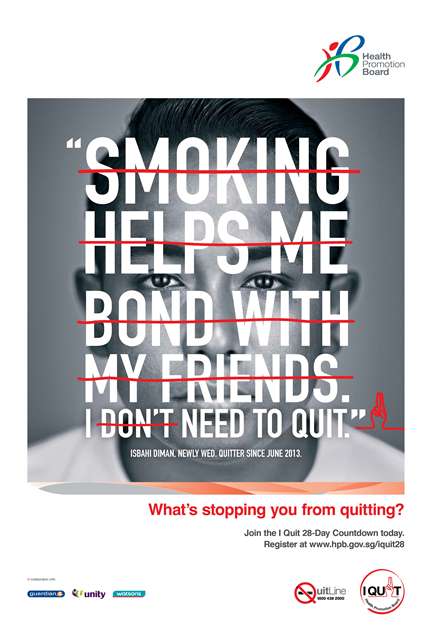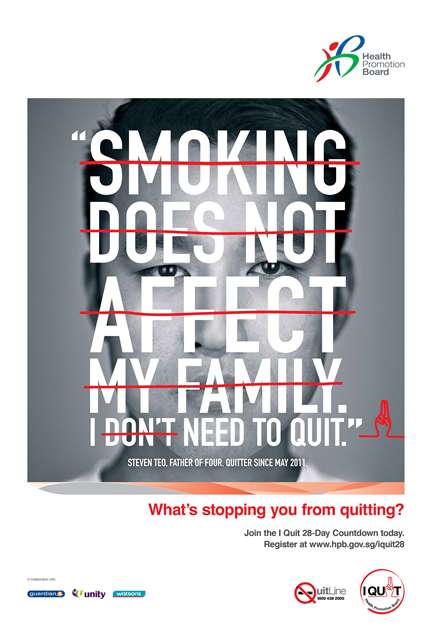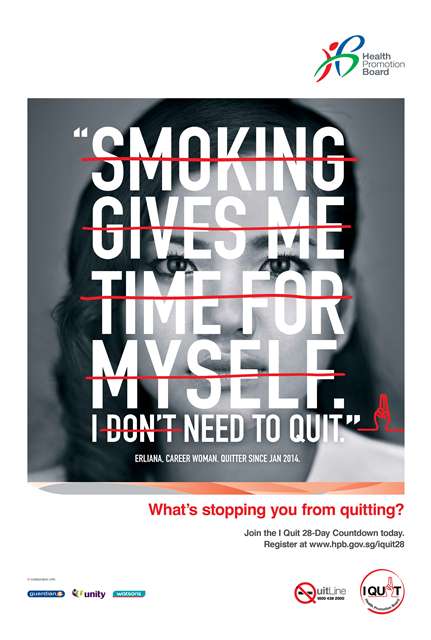World Health Organization Collaborating Centre for Smoking Cessation and Treatment of Tobacco Dependence
Best Practices of Smoking Cessation in the Western Pacific Region
Singapore
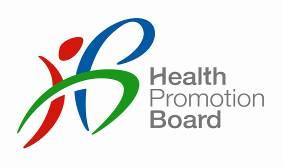 Holistic tobacco control in Singapore
Holistic tobacco control in Singapore
Singapore’s National Tobacco Control Programme (NTCP) utilises a multi-pronged approach to reduce the supply and demand of tobacco, focusing on prevention and cessation with strategies around taxation, tobacco control legislation, public education, collaborative partnerships and provision of smoking cessation services.
As a result of the comprehensive and multi-pronged approach, the daily smoking prevalence amongst Singaporean residents aged 18 to 69 years has stabilised in recent years, from 13.6% in 2007 to 13.3% in 2013 (National Health Surveillance Survey 2013, Ministry of Health).
Singapore aims bring down the daily smoking prevalence rate to 12% by 2020. To achieve this, the Health Promotion Board (HPB) will be escalating its tobacco control efforts, adopting a two-pronged strategy to prevent smoking experimentation among youths and provide more support to encourage smokers to quit.
Provision of smoking cessation services
One of the key approaches of the NTCP is to offer smoking cessation services that are affordable and accessible to smokers. Since the 1990s, smoking cessation services have been integrated into the primary healthcare settings such as the hospitals and polyclinics. These services are also now available at retail pharmacies, providing a wide network of 150 accessible touchpoints for smokers.
HPB also manages QuitLine (1800 438 2000) to provide personalised advice by trained Quit Consultants on how to quit smoking. Through this toll-free hotline, the public can also request for free self-help print resources to be mailed to them.
Leveraging social media, HPB developed the I Quit mobile app (available for download at the App Store and Google Play) to help tech savvy smokers identify and tailor the most effective approach to quit smoking for themselves. With progress tracking, the app records the lengths of time of one’s quit attempts and money saved, in addition to providing tips and coping strategies to manage withdrawal symptoms and cravings.
I Quit 28-Day Countdown
The annual I Quit campaign, which was introduced in 2011, adopts a community-based but personalised approach to build a network of support to help smokers of all ages make their first or next attempt to quit smoking. Since then, the I Quit programme has grown into as social movement that has seen many smokers come forward to pledge to quit smoking.
HPB introduced the “Let’s Quit: The 28-Day Countdown” as part of its I Quit campaign in 2013. Building on last year’s success, I Quit campaign 2014 will once again inspire smokers to remain smoke-free for 28 days through “I Quit 28-Day Countdown”. The challenge is based on findings that smokers who stay smoke-free for 28 days are five times more likely to succeed for good. Smokers are also more likely to quit successfully when they have a supportive environment. The 28-Day Countdown helps smokers to break down quitting into actionable steps to empower smokers with the knowledge and support to remain smoke-free through the crucial period of 28 days.
To bring the I Quit programme to the smokers’ doorstep, the I Quit roadshows will be roving all over Singapore starting from the National Tobacco Control Campaign launch on 31st May 2014. Roadshows are roved to community events to reduce barriers to quitting, by allowing smokers to sign up for the I Quit 28-Day Countdown at these events. At the same time, information on the harms of smoking, Environmental Tobacco Smoke (ETS), as well as tips for family members to support quitters during their quit journey is shared during these roadshows to the public, to increase awareness on these areas. Besides signing up at the I Quit roadshows, smokers can also register online for the countdown at www.hpb.gov.sg/iquit28 or at partnering pharmacies.
Targeted interventions
HPB actively engages educational institutions, workplaces, uniformed services, healthcare professionals, youth organisations, community groups and parents, to promote a smoke-free lifestyle through targeted smoking cessation programmes.
Smoking cessation programmes for youth
The prevalence of smoking among youth aged 13 – 16 years is 6% in 2012. HPB tackles smoking among youths through both cessation and prevention efforts. For example, HPB will be working with schools and appropriate community partner(s) to set in place a 10-week hourly smoking cessation programme for youth smokers aged 13 - 17 years old. Through sharing and hands-on activities, youth are equipped with the knowledge and skill set to quit or cut down smoking, as well as being made aware of the benefits of being tobacco-free. Conducted over a 3-month period, youth smokers will also get an opportunity to participate in different activities during each follow-up session, while being provided counselling and support to quit smoking.
Malay Muslim Community
NHSS 2013 results show that the Malay community has a high prevalence of tobacco use. HPB partners with Malay Muslim organisations such as Majlis Ugama Islam Singapura (MUIS) and mosques to initiate targeted interventions to help smokers quit smoking. During Ramadan each year, HPB expands its outreach efforts through roadshows at festive Ramadan Bazaars and interested mosques to recruit smokers in the I Quit smoking cessation programmes. After Ramadan, HPB continues to conduct roadshows at selected mosques to help Malay Muslim smokers quit smoking. In addition, HPB works closely with partnering mosques to offer holistic health programmes, which will comprise smoking cessation workshops, health screening and physical activity to promote healthy living among the Malay Muslim community.
Healthcare settings
Smoking cessation programmes in healthcare settings are another important venue to help smokers quit smoking. These include hospital in-patient services that offer brief advice and bedside smoking cessation counselling to patients who are smokers, as well as opportunistic counselling in community outpatient settings such as polyclinics. HPB provides smoking cessation counselling to women smokers attending antenatal and postnatal clinics at KK Women and Children’s hospital.
Capacity building
Capacity building for smoking cessation counselling is conducted through various training courses such as the Certification for Quit Smoking Consultants (CQSC) Program, launched in 2005. The CQSC course aims to enhance and maintain therapy and counselling standards among HPB's service providers and healthcare and community partners.
Training is also conducted regularly to equip health promotion facilitators with advocacy skills to secure management buy-in and programme planning skills to implement in-house cessation interventions and year-long educational activities. HPB also trains pharmacists, General Practitioners, nurses, social workers and dentists to provide opportunistic smoking cessation advice to patients.
